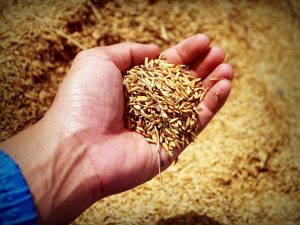 A high concentration of airborne dust can create an explosion hazard as well as workplace-induced asthma and other diseases. Protecting your employees and facility from combustible and respiratory dust hazards is not just prudent, but also may save lives.
A high concentration of airborne dust can create an explosion hazard as well as workplace-induced asthma and other diseases. Protecting your employees and facility from combustible and respiratory dust hazards is not just prudent, but also may save lives.
Many materials can be explosive in dust form and they exist in many industries and processes. Examples include: food (e.g., candy, sugar, spice, starch, flour, feed), grain, tobacco, plastics, wood, paper, pulp, rubber, pesticides, pharmaceuticals, dyes, coal and metals (e.g., aluminum, chromium, iron, magnesium, and zinc).
In grain processing and storage facilities, grain dust is the main source of explosions, according to the Occupational Health and Safety Administration (OSHA). In the last 35 years, more than 500 grain dust explosions have been recorded in the U.S., killing more than 180 people and injuring more than 675, according to OSHA.
On May 31, 2017, an explosion rocked a milling plant in Wisconsin, killing killed five workers, injuring 12 and destroying a corn processing plant. After a five-month OSHA investigation determined that the incident was preventable, the company was fined $1.8 million.
OSHA’s investigation found that the company failed to take several safety measures, including failing to control highly combustible grain dust that leaked from enclosures and accumulated throughout the plant. In addition, the company didn’t maintain equipment to prevent heat or sparks that can ignite the dust.
The company’s willful citations were issued under OSHA’s grain handling standards for machine maintenance and dust control, the Wisconsin State Journal reported. Among other failures, the serious citations included violating rules requiring that dust-filtering machinery installed inside a building are equipped with explosion-suppression devices. The company was also cited for not creating a written dust-removal plan and schedule, and not training employees. Instead of requiring sweeping, workers were allowed to use compressed air to clear dust from surfaces around machinery that could ignite it, OSHA’s report said.
NFPA 654, Standard for the Prevention of Fire and Dust Explosions from the Manufacturing, Processing, and Handling of Combustible Particulate Solids, contains comprehensive guidance on the control of dusts to prevent explosions. Some of its recommendations include:
- Minimizing the escape of dust from process equipment or ventilation systems
- Using dust collection systems and filters
- Using surfaces that minimize dust accumulation and facilitate cleaning
- Providing access to all hidden areas to permit inspection
- Inspecting for dust residues in open and hidden areas, at regular intervals
- Cleaning dust residues at regular intervals
- Use cleaning methods that do not generate dust clouds, if ignition sources are present
- Only using vacuum cleaners approved for dust collection
- Locating relief valves away from dust hazard areas
- Developing and implementing a hazardous dust inspection, testing, housekeeping and control program (preferably in writing with established frequency and methods)
In addition, the OSHA ventilation standard, 29 CFR 1910.94, contains ventilation requirements for certain types of operations (such as abrasives, blasting, grinding, or buffing) which involve dusts, including combustible dusts. In addition, 29 CFR 1910.22(a)(1) requires employers to keep workplaces and other areas clean, which includes the removal of dust accumulations. Learn more at www.osha.gov/dts/shib/shib073105.html.
“It is important to keep dust to a minimum. Dust accumulation is not allowed beyond a threshold depending on the product and type of facility,” said Jeff Lavery, KC Supply Co. owner.
Industrial vacuums can help contain hazardous dust in certain environments. KC Supply Co. offers electronic and air-operated vacuums, with 30- and 55-gallon capacity and including static conductive and hazardous location options. If you need help cleaning up hazardous dust in your facility, call us at 800.527.8775 today. We can answer your questions and help you get a plan in place for cleaning up dangerous dust in your facility.


